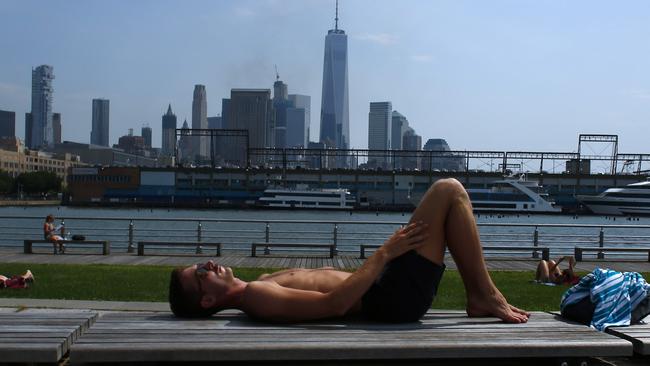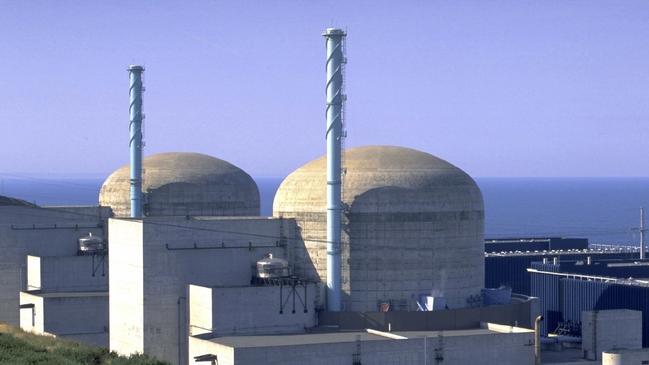
The UK Met Office weather agency registered a reading of 40.3 degrees at Coningsby in Lincolnshire which established a new record that had been set elsewhere hours earlier. Prior to Tuesday, the highest temperature in Britain was 38.7 set in 2019. By later in the afternoon, 29 locations in the UK had broken the 2019 record.
New York City is predicted to hit the Fahrenheit ton (38 degrees Celsius) on Sunday. It happens. In fact, it has happened 31 times since 1870. The Big Apple hasn’t clocked a ton since 2012 but it did so in three consecutive years from 2010. 90 percent of dwellings in New York City are air-conditioned but of the 167,000 public housing dwellings putting a roof over 335,000 heads across the five burrows, less than fifty per cent are air-conditioned. Most of these homes are in medium rise buildings where, when the mercury tips 30 degrees celsius outside, it’s 35 degrees inside.

We’re not unused to these temperatures in Australia, of course. Three quarters of Australian homes either have air-conditioning or evaporative coolers. In the UK, the figures aren’t easy to find but Britain’s Department for Business Energy and Industrial Strategy put the number of air-conditioned homes in Great Britain at less than five per cent of all dwellings. Ouch.
Meanwhile in France, five of the country’s 18 nuclear reactors were forced to drop their output, placing pressure on supply when demand is at peak levels. France is expected to be protected from the looming energy crisis in much of the rest of western Europe driven by an addiction to cheap Russian energy to power industry, cool and warm homes.
70 percent of all electricity generated in France comes from nuclear energy. But French nuclear reactors for the most part are located on river systems and regulatory guidelines oblige them to reduce their outputs by half when down river water temperatures rise by 0.3 celsius or more. If river temperatures exceed 30 degrees, the plants cannot cool and must shut down. With regulated reductions in place, the 70 percent figure of nuclear energy’s contribution to the French national grid has been reduced to 50 percent over the last ten days.
The pressure on the electricity grid has meant the French state-owned energy company, EDF, has sought and received exemptions or derogations from ASN (the French Nuclear Safety Authority) in three of the five power plants. But in the Blayais plant, located on the banks of an estuary where the Dordogne River meets the Atlantic near Bordeaux, the regulations do not permit derogation and the production target announced by EDF is incompatible with the operating limits of the plant.

Across the Channel, Great Britain’s eight nuclear power plants remain online and pumping. A spokesman for EDF (yes, the French national company owns those, too) told media, “All of EDF’s UK nuclear power plants benefit from the cooling effects of a coastal location and are therefore less likely to experience the highest temperatures forecasted or recorded in the UK. Scenarios like heatwaves are factored into safety cases and plant design to ensure continued safe operation.
“We will keep the conditions under review and if temperatures continue to rise there are a range of actions we can take to mitigate this including monitoring of plant condition and increasing ventilation.”
On 19 July the French Finance Ministry announced that they intend to pay $14.8 billion or $16 a share to buy the 16 percent of the debt riddled EDF it does not already own. The nationalisation is an attempt to soothe nervous creditors over the company’s net published debt at $63.6 billion in 2021 with an estimated $6 billion to be added in red ink to EDF’s profit and loss this year.
Thus, in a cruel twist of irony for Brexiteers, much of the company’s revenues from its nuclear power plants in Great Britain will go straight back over the Channel.
EDF is currently building the Hinkley Point C nuclear power station in Somerset, the first nuclear power plant to be constructed in the UK in a generation. The project is being financed by EDF Energy and China General Nuclear Power Group (CGN).
There have been delays and cost overruns but there is now hope Hinkley Point C will come online some time in 2027 where it is planned to provide 13 per cent of the UK’s electricity needs. Construction began in 2017. It received a nuclear site licence from the UK’s Office for Nuclear Regulation in 2012.

The long lead time for nuclear power plants to go online and just who owns and finances them notwithstanding (it’s either the French or the Chinese these days), little has been said about the problems associated with nuclear energy generation during heatwaves. I’ve certainly not come across it in the debate about nuclear energy in Australia which, as we know, is prone to suffer heatwaves that would have the English running around in their underpants and, with climate change, we’re bound to get a lot more of them.
Just in case you’re wondering, nuclear power plants don’t go well during floods much. In 1999, a combination of high winds and incoming tides breached the sea wall around the Blayais nuclear plant leading to what was described as a “level two incident” in the one-to-seven International Nuclear Event Scale.
For those who cheer as the renewables bandwagon passes, the bad news is that photovoltaic cells -- solar panels don’t prosper in extreme heat either. In this Northern Hemisphere heat wave, Germany broke its national record for solar power generation earlier this week. Solar panels are designed to operate optimally at 25 degrees. They continue to operate at peak efficiency up to 35 degrees. Beyond that, efficiency drops markedly.
It is entirely possible that our energy responses to climate change be they nuclear or renewables might be thwarted at least in part by the effects of climate change -- severe weather events, heatwaves, floods. Some of these problems may well become insurmountable. We can’t say we weren’t warned.








Comedian Denis Leary warned us in song about certain behaviours, so I have not bothered friends in the northern hemisphere with the question, “How about this heat?” Those in London especially are bound to draw the same conclusions sung heartily in Leary’s chorus.